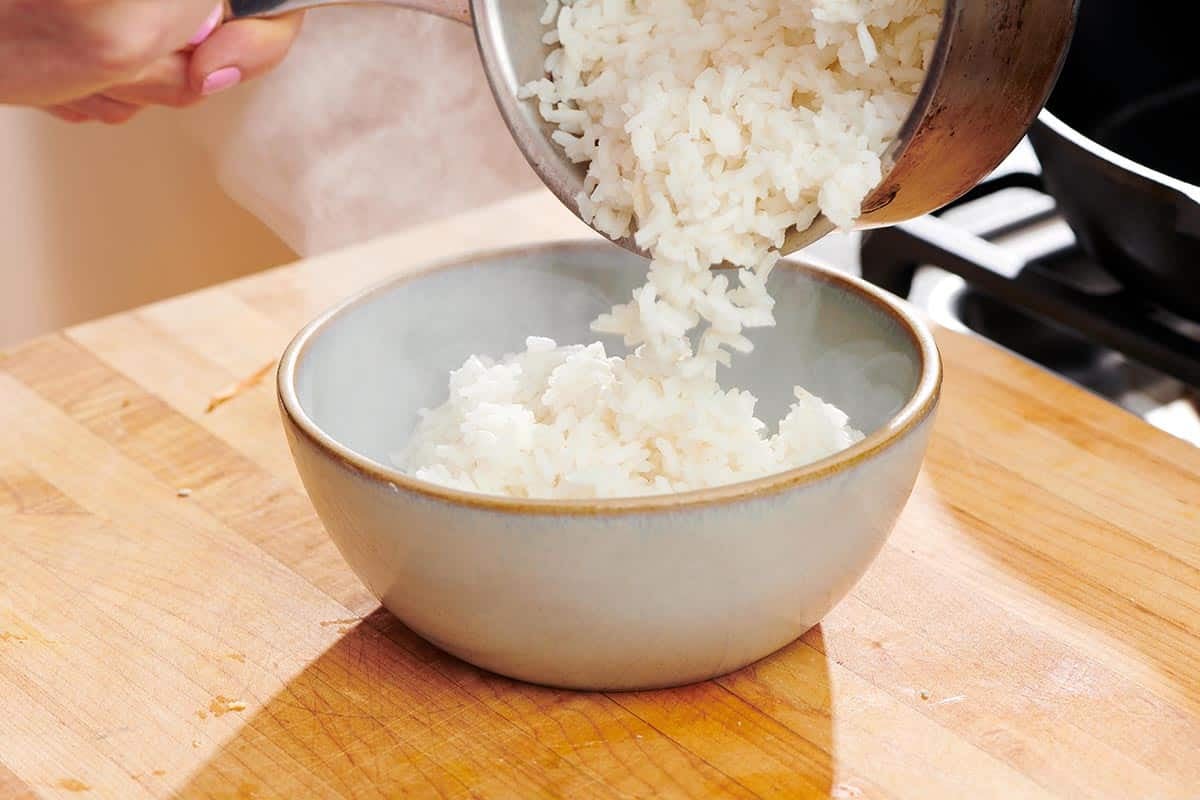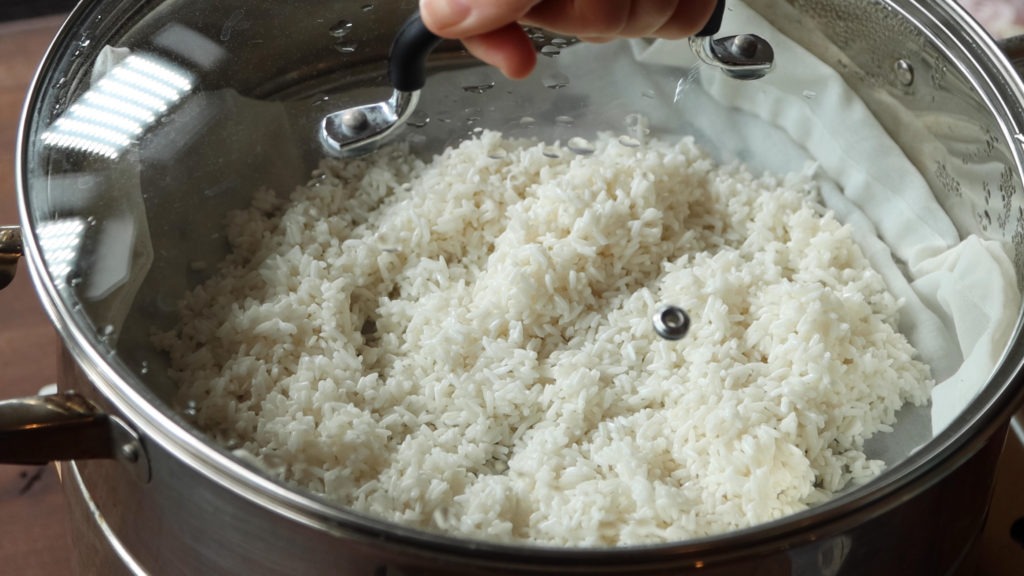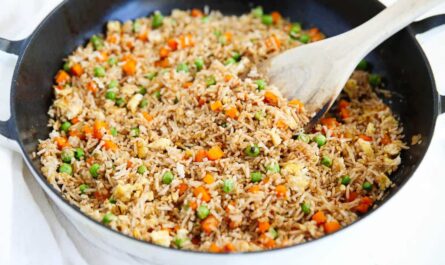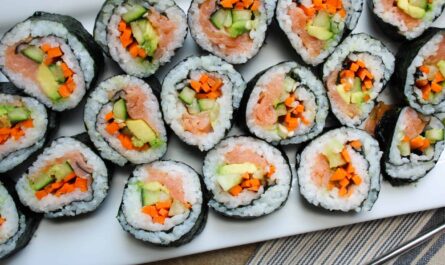The rice paper rolls recipe is not just a culinary instruction; it is a gateway into the vibrant flavors of Asian cuisine, particularly from Vietnam. These delicate rolls are a delightful combination of textures and tastes that cater to health-conscious eaters and food lovers alike. Made with fresh ingredients wrapped in thin, translucent rice paper, they can be filled with a variety of meats, vegetables, or even made vegan. The versatility of rice paper rolls makes them a popular choice in many cultures beyond their origins, appealing to sushi lovers and health enthusiasts across the globe.

What are Rice Paper Rolls?
Rice paper rolls, also known as salad rolls or fresh spring rolls, are a traditional Vietnamese dish that has made its way onto menus worldwide. These rolls are typically filled with a variety of fresh vegetables, proteins like shrimp or pork, and rice vermicelli. They are wrapped in rice paper, which is made from a mixture of rice flour and water, creating a thin, pliable sheet that gives the rolls their unique texture. The beauty of rice paper rolls lies in their refreshing nature and the endless possibilities for fillings and dipping sauces.
A Brief History of Rice Paper Rolls
The origin of rice paper rolls can be traced back to the bustling streets of Vietnam, where street vendors sell these refreshing snacks to locals and tourists alike. Traditionally, rice paper was a staple in Vietnamese households, used in a variety of dishes. As Vietnamese cuisine began to gain popularity worldwide, rice paper rolls entered the culinary spotlight. Over the years, these rolls have evolved, and now they are enjoyed in various countries, often with regional twists that suit local palates. Its common to find variations of rice paper rolls that incorporate local ingredients, further enhancing their appeal and adaptability.
:max_bytes(150000):strip_icc()/how-to-make-basic-white-rice-2355883-10-5b0da96eba6177003622896e.jpg)
Why Make Rice Paper Rolls?
Making your own rice paper rolls at home offers several benefits. First, you have complete control over the ingredients, allowing you to cater to dietary restrictions or preferences. Want a vegan option? Simple! Prefer gluten-free? You can achieve that too! By crafting your own rolls, you can experiment with different combinations of flavors and textures, ensuring that each bite is an experience. Furthermore, rice paper rolls are inherently healthy, packed with fresh vegetables and lean proteins, making them an excellent choice for a light meal or a snack that doesn’t compromise on taste.

Gathering Ingredients for Your Rice Paper Rolls Recipe
To make delicious rice paper rolls, it is essential to gather all the necessary ingredients. Below is a list of ingredients along with some essential equipment that will ensure your cooking experience is seamless and enjoyable.
Ingredients:
- Rice paper sheets (810 pieces)
- Rice vermicelli noodles (1 cup, cooked)
- Shrimp or cooked chicken (1 cup, sliced thinly)
- Fresh herbs (mint, cilantro, basil)
- Fresh vegetables (lettuce leaves, cucumber, carrots, bell peppers, all julienned)
- Sauce for dipping (hoisin sauce, peanut sauce, or nuoc cham)
Beyond the basic ingredients, consider exploring some filling options that will excite your taste buds. For a healthier twist, try including avocado slices or bell peppers. For a protein boost, you can add tofu, tempeh, or bean sprouts, especially if youre catering to a vegan or vegetarian crowd. The flexibility in ingredients makes rice paper rolls a delightful dish for gatherings, where guests can personalize their rolls according to their preferences.

Essential Cookware for Making Rice Paper Rolls
While the ingredients are paramount, having the right tools can elevate your experience. Here are some essential pieces of cookware you would need to master this rice paper rolls recipe:
- Rice Cooker: Perfect for cooking your rice vermicelli noodles, a quality rice cooker can make the process uncomplicated.
- Sushi Knife: A sharp knife is essential for slicing your protein and veggies with precision.
- Cutting Board: A sturdy cutting board is necessary for prepping the ingredients efficiently.
Having these tools at your disposal not only makes the process smoother but ensures that you can create professional-quality rice paper rolls from the comfort of your home. Cleanliness and maintenance are just as important, so don’t forget that keeping your cookware spick and span is essential for a safe and healthy cooking environment. After preparing your meal, consider using a Cookware Cleaner to maintain your cooking surfaces and a Cutting Board Conditioner to preserve your board’s longevity.
Step-by-Step Guide to Making Rice Paper Rolls
Now that we have covered the ingredients and tools, lets dive into the nitty-gritty of making these delicious rice paper rolls. This guide will break down the process, providing you with tips and tricks to ensure that your rolls come out perfectly every time.
Step 1: Preparing the Ingredients
The first step in crafting your rice paper rolls is to prepare all your selected ingredients. Begin by cooking the rice vermicelli noodles according to the package instructions. Once cooked, rinse them under cold water to halt the cooking process and remove any excess starch. Drain them thoroughly and set aside. Next, slice your protein of choice into thin pieces, ensuring they will fit snugly into the rice paper. Prepare your vegetables by washing and julienning them into thin strips for easy rolling. Fresh herbs should be rinsed and dried. This prep work may seem tedious, but it is absolutely key to a successful rolling experience.
Step 2: Soaking the Rice Paper
For the next step, take a shallow bowl or dish and fill it with warm water. Dip one rice paper sheet into the water for about 10-15 seconds or until it softens but still retains its shape. Be careful not to soak it for too long, as it will become too fragile and tear easily. You want the rice paper to be pliable enough to roll without falling apart. Remove it from the water and lay it flat onto your prepared surface, such as a cutting board.
Step 3: Assembling the Rolls
Once the rice paper is ready, its time to assemble your rolls. Begin by placing a small amount of rice vermicelli noodles near the bottom third of the rice paper. Add a few slices of your protein, followed by an assortment of vegetables and fresh herbs. Be mindful not to overfill the rice paper, as this can make rolling difficult. A good rule of thumb is to create a filling that is about 1/3 of the width of the sheet. After layering your ingredients, its time to roll!
Step 4: Rolling the Paper
To roll your rice paper rolls, start from the bottom edge where the fillings are placed and make sure to tuck it tightly as you fold it over the fillings. Once youve tucked it in, fold the sides inward, creating a packet of flavors. Continue rolling it tightly until you reach the top edge of the rice paper. The rice paper should seal itself, but for added security, use a dab of water along the edge to make sure it sticks. Repeat these steps with the remaining rice papers and fillings.
Step 5: Dipping Sauce Creation
A meal is not complete without the perfect dipping sauce. Popular choices for rice paper rolls include hoisin sauce, peanut sauce, or the classic Vietnamese dipping sauce, nuoc cham. To make nuoc cham, combine lime juice, sugar, fish sauce, and minced garlic in a bowl. Adjust the balance according to your personal taste preference, and dont forget to make it spicy by adding chopped chilies if desired. Serve your rolls with a small bowl of sauce on the side for dipping, and enjoy the burst of flavors with each bite.
Tips and Tricks for Perfect Rice Paper Rolls
As with any culinary endeavor, it helps to have some tips and tricks up your sleeve for perfecting your rice paper rolls. Here are some insights that can help you avoid common pitfalls:
- Keep Everything Fresh: The fresher your vegetables and proteins, the better your final product will be. Opt for organic where possible to ensure you are getting the most nutrient-dense versions of your ingredients.
- Practice Makes Perfect: If youre a beginner, dont be disheartened if your first few rolls dont come out looking perfect. Perfecting your rolling technique will come with practice. Keep at it, and youll soon be rolling like a pro!
- Store Properly: If youre not consuming all of your rice paper rolls right away, store them in an airtight container lined with damp paper towels to maintain moisture. This will prevent them from drying out and becoming hard.
- Explore Variations: Break free from tradition and experiment with different combinations of fillings. You might discover new favorites that your friends and family will adore.
Creating rice paper rolls can be a fulfilling and delightful experience that not only helps you connect with global cuisines but allows you to indulge your culinary creativity. Remember to have fun, and experiment along the way!
Conclusion
In conclusion, the rice paper rolls recipe offers a wonderful opportunity to engage with fresh and healthy ingredients while immersing yourself in the flavors of Vietnamese cuisine. Whether you enjoy them as a snack or as part of a larger meal, rice paper rolls are bound to impress anyone who tries them. Hopefully, this guide has equipped you with the knowledge and inspiration to venture into the exciting world of rice paper rolls. Dont hesitate to share your creations with friends and family, and be sure to tag your culinary adventures online!
For an extra delicious adventure, check out this steak recipe that pairs wonderfully with rice paper rolls.
As an Amazon Associate, I earn from qualifying purchases.
Here are some additional articles that you may find interesting:




